Let’s start with some basic terms like:
Content.Content marketing.
Marketing funnel.
Smart content marketing funnel.
Familiar, right?
We’ll assume there is no need to explain the impact of content (and by that I mean not just any kind of content) in a content marketing funnel, and also that content marketing isn’t just writing blog posts . This is the misconception many business owners, even some marketers, still have. Claiming that content marketing is just another word for blogging is, well, wrong. Blogging is definitely a part of content marketing, but there is much more involved.
. This is the misconception many business owners, even some marketers, still have. Claiming that content marketing is just another word for blogging is, well, wrong. Blogging is definitely a part of content marketing, but there is much more involved.
Remember:
- Your pricing table is also content
- Your video explaining the details of the product you're selling is also content
- Social media advertising (posts, carousels, offers, images, videos) are also content
- Your FAQ on a website is also content
- Testimonials and stories from your customers are also content
Look at the example below:
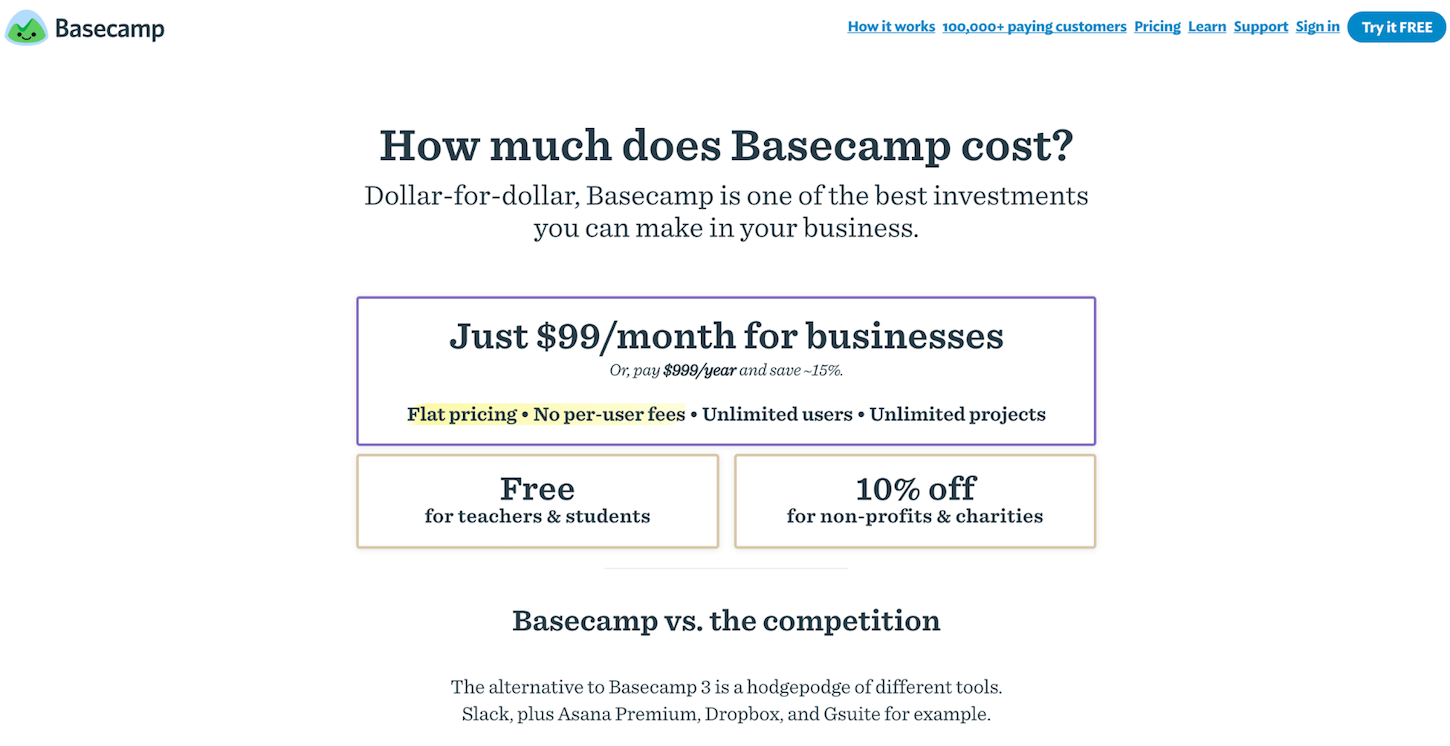
Who can claim this isn’t content?
Yes, we all agree, it’s Basecamp’s pricing table, but still — it’s the perfect type of content for prospects who are already deep in your content marketing funnel and considering subscribing.
This content type, though, isn’t appropriate for prospects still in the early stages of Basecamp’s marketing funnel. And that’s why smart content matching is important.
We’ll be discussing the marketing funnel stages and examples later in this article. For now, it’s important to mention that content should be considered your most valuable asset for attracting your target audience and converting them into leads and customers.
But not without a plan!
You might also like: What is Content Strategy and Why Your Business Needs One.
The content marketing formula is clear: Without content (or with poor content), there is no audience, and with no audience, there is no one to promote and sell to.
This article will be a journey through the smart content marketing funnel — from defining it, to diving deeper into the psychology behind it, and getting a clear picture about it through a series of real-world examples and actionable tips.
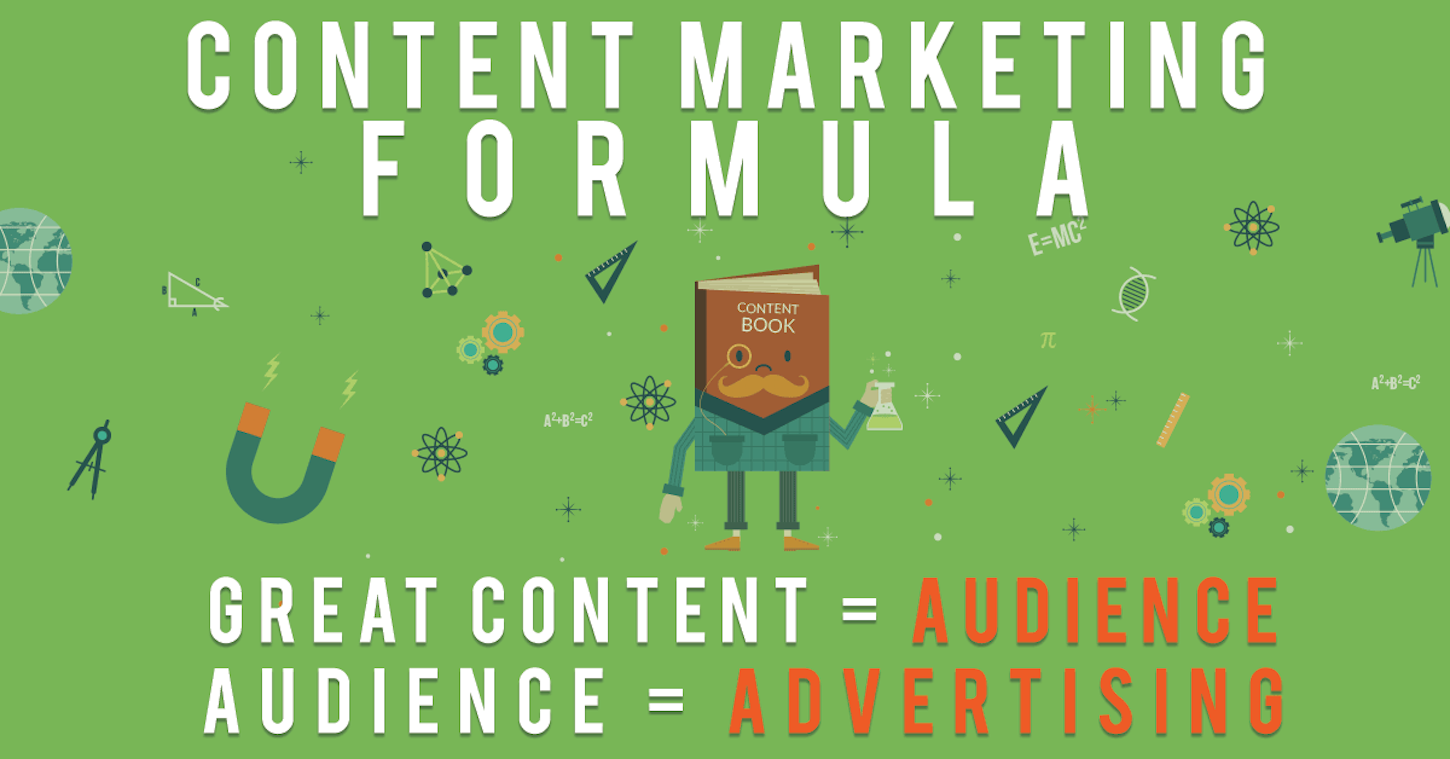
What is a smart content marketing funnel?
By “smart content marketing funnel,” we mean a fully integrated website with additional tools and plugins that recognize each visitor and show dynamic content and offers, based on the stage each visitor is currently at in the funnel.
Gone are the days when brands could successfully promote simply by placing static content in front of their visitors.
At least in theory.
You’ll probably still see many companies doing things the old way, but that leads to a huge pile of missed opportunities. Many businesses fail in their marketing efforts by not following good practices like retargeting, automated email marketing, reminding your visitors about abandoned carts, leveraging lead gathering forms, A/B testing, using landing pages, or simply diving deeper into social media advertising.
"Many businesses fail in their marketing efforts by not following good practices like retargeting, automated email marketing, reminding your visitors about abandoned carts, leveraging lead gathering forms, A/B testing, using landing pages, or simply diving deeper into social media advertising."
There are a few key factors that are crucial for a smart content marketing funnel:
- Expectations from buyers have changed (evolved) from those 5 or 10 years ago
- Increasing competition online (forcing you to be creative and come up with new ideas)
- Technological advancements and tons of marketing tools and ad-tech innovations like retargeting, dynamic email marketing automation, exit intent detection, integrated CRM / email marketing technologies, geolocation checkers, etc.
- Education
From a content marketing point of view, there is no better advice than to match the right content type to each of the marketing funnel stages.
Let’s assume you have that perfect piece of content.
(Shhh — the other options aren’t even considered here because, hey, who today can afford to provide poor content or no content at all and expect to sell something?)
By just having a ‘perfect piece of content’, there is no guarantee that you’ll sell your product right away to a prospect who’s never heard of you before. It’s pretty unlikely. People first need to get familiar with your brand and the product (or related products) or service you’re selling.
Think of it like dating! You wouldn’t ask someone to marry you on the first date, would you? First you’re dating, then you’ll move in and live together for some time, get engaged, and finally get married.
During that process, you’re changing the “content types” you’re using on a daily basis with your partner, too. You don’t tell the same stories when you're married as on the first date! Well, at least I hope you’re not! :)
The idea behind content marketing and smart content matching is the same. And here comes the psychology of a content marketing funnel and the workflow you want to follow.
You might also like: How to Generate Leads for Your Business Using Content.
The psychology of a content marketing funnel
Customer journeys always begin with the awareness phase , followed with the evaluation (sometimes also called consideration) phase, and ends with a conversion. Just like the marriage analogy above.
, followed with the evaluation (sometimes also called consideration) phase, and ends with a conversion. Just like the marriage analogy above.
Makes sense? The image below visually displays all the things mentioned above.
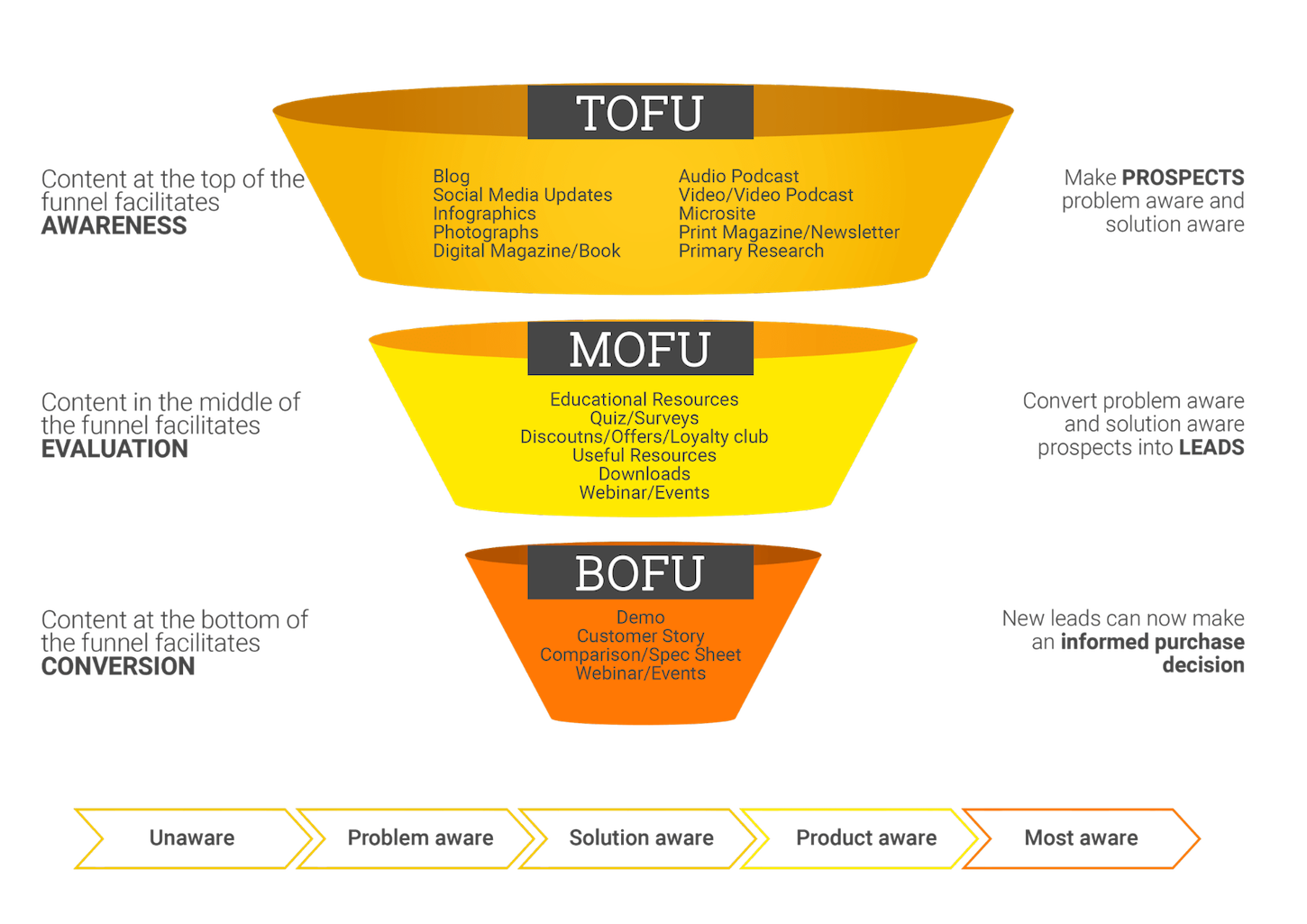
In the awareness stage, prospects may not even be aware of the problems they have. They aren't aware of your brand, and they certainly aren't aware of the solution you have available to them. They are just looking for answers, resources, education, research data, opinions, and insight, with no special goal in mind.
In the evaluation stage, prospects are evaluating various choices available to them, including your competitors. This is usually the time when they are doing heavy research on whether or not your product or service is a good fit for them and a perfect time for content that tells them exactly that.
Those that move through the evaluation stage are now presented with the ultimate decision — to make a purchase or not. And with the help of appropriate content in the right time on the right place, this decision will be easier to make.
As the journey cycle of your prospect changes, your content should change too.
Why?
Because the prospect’s awareness and expectations change. Each stage of a buying cycle has a specific set of questions your prospects will usually ask as they ascend through the stages. Providing them with answers to these questions in the right moment will actually remove friction in their decision making process and, consequently, increase your conversion rate.
The main goal of a marketing funnel is to move your prospects from being completely unaware of their problem or opportunity, to the point where they will be able to make an informed purchase decision.
To move a prospect through the stages of a buying cycle, you’ll need to create different content designed to satisfy their needs at each of the three stages. You’ll also have to remove all the steps on this journey that could cause friction by understanding your audience and providing them with answers in the form of well-matched content, before they even ask their questions.
In other words, you’ll need to provide:
- Content that facilitates awareness
- Content that facilitates evaluation
- Content that facilitates conversion
Let’s explain this through an example.
Would you buy a Macbook Pro laptop for $3,000 if you’ve never heard of Apple?
I wouldn’t. At least not at first. Many of us wouldn’t.
We all want to be familiar with the brandfirst, check reviews about them, watch unboxing videos, make sure their support is awesome, compare them with competitors, etc.
Steps to implement a smart marketing funnel (examples included)
Implementing a smart marketing funnel for a business is not something you’d easily categorize as a one-size-fits-all project. It can greatly vary based on the vertical, business model, campaign end goal, and other factors. Just as the nature of each website can be different (ecommerce, service oriented, digital product shops, SaaS, blogs, personal sites, local business websites, etc.), providing the content for each stage of the funnel should be different too.
The only thing that is universal to all of them is the following: You need to lead your new visitor through every step of your funnel by providing them with appropriate content.
by providing them with appropriate content.
The backbone of every funnel relies on a few main concepts and steps (explained in detail below). To simplify things, think of it as a step-by-step conversation with your new potential customer.
If you expect people to simply land on your website and purchase something, you’re wrong. Even if this happens from time to time, you’re missing a lot. There is a sequence of steps that they should go through before finalizing the order. This sequence will make them familiar with you — who you are, what your brand represents, what are the values you believe in, what others think about you — and develop feelings about your brand, like for example reliability, security, and positive attitude. People are much more likely to make a purchase after they get to know the seller a bit better.
The basic template to follow would look something like this:
Step #1 — Content for top of the funnel (ToFU)
This stage is critical because you’ll be recruiting your audience here. At the top of the funnel, we're dealing with the awareness about the problem you’re trying to solve, and your content in this stage should be raising awareness.
You should talk to a very cold prospect at this point. They may not be aware of the problems they have, they aren't aware of your brand, and they certainly aren't aware of the solution you have available to them.
When a visitor lands on your website for the first time and engages with you (by reading your blog, visiting your home page, informing themselves about your services, checking the web shop, etc.), they might be unaware of what you’re actually selling. They still might not know how you can help them solve their problem.
Ron Willingham wrote in his book The Inner Game Of Selling: “You’re not selling products or services, you’re selling solutions, gratifications, rewards and enjoyment. In other words — end result benefits.”
So tell your customers that.
In the ToFU stage, your goal is to communicate the “solutions, gratifications, rewards and enjoyment,” or “the end benefits” to your audience. Resist the urge to bother them with detailed specifications. Give them their reward. There will be time for in-depth specs later in the funnel.
What many business owners do wrong at this stage is trying to sell to the first-time visitor. The quote below couldn’t illustrate better how most of us feel when we’re in the role of a buyer:
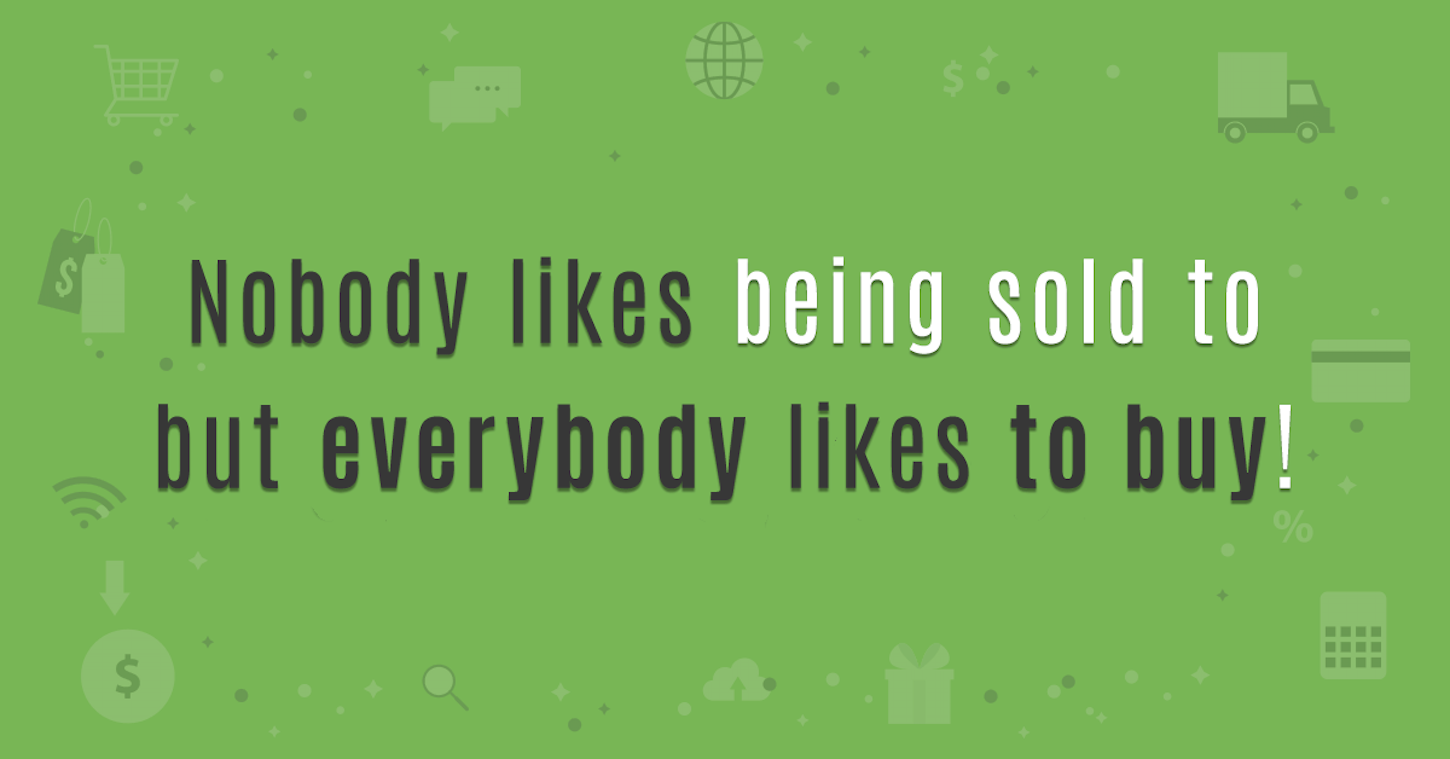
Help them to get to know you first, and put them in the center. Help them with a guide on a topic you identified that could bother them. Or just ask what bothers them. Avoid any selling, or even typical sales language at this point. That way, you’ll have them in your funnel for a longer period of time.
Content in the ToFU stage should be oriented towards problem solving. Find out who your target audience is, identify different persona groups inside your audience, and start researching what problems they have that are at least vaguely related to what you are doing.
These are your audience’s pain points. You just identified problems that cause your audience to be unhappy, anxious, or nervous. Now provide solutions to these problems.Specific problems will dictate different types of content, but the main idea is to help your target audience make their pain points go away.
The role of marketers here is to educate the website/business owners on the importance of removing friction through the sales funnel. This can be done only if you lead your first-time visitor through the funnel correctly by providing them with content that’s well-matched with their awareness about the problem they might not even know they have at this level.
Content at this stage therefore needs to be freely available and must aim to educate, entertain, or inspire.
ToFU content type:
- Blog
- Social media updates
- Infographics
- Photographs
- Digital magazines
- Books
- Audio/Video Podcasts
- Microsites
- Print Magazine/Newsletter
Goals:
- Increase awareness about the solution for their problem. Identify your target audience and specific pain points they have, check where they hang out, and start giving them answers. Be subtle with promotions at this stage. Instead, be helpful, use actionable content to get in front of the people that might need what you’re selling.
- Grow retargeting lists. People are much more likely to become paid customers after several ‘touches’ and engagements with your brand.
- Increase engagement. More retweets, shares on LinkedIn, Facebook, Instagram, and other social networks mean more pageviews and lower bounce rates.
- Increase traffic to your site.
Metrics:
- Awareness rate about the product or service
- Retargeting list growth rate
- Site engagement rate
- Number of inbound links
- Traffic by channel
Unfortunately, brands often begin and stop their marketing efforts by producing content only for the first stage of the marketing funnel. As a result, they’re missing the opportunity for higher conversion rates that can be achieved further down the funnel. This involves attracting more visitors and leading them to a purchase decision through a series of well-researched and well-matched content pieces in various forms with the goal of ascending them from one stage to another.
Step #2 — Creating content for middle of the funnel (MOFU)
At this stage, your visitors are generally aware of your brand and what you have to offer. Now it’s time to lead them further down the funnel and to ‘make them want’ to opt in with their email address. The best way to keep them interested is by trying to build a long-term relationship with them.
But how?

How about lead magnets?
Yes, those awesome pieces of content that will attract your visitor to the MoFU.
Don't miss the opportunity to set a catchy CTA (call to action) and invite your visitors to join your email list.
They’re already interested in what you have to offer, remember? Otherwise they wouldn’t be on your site, reading your content.
If you followed all the steps, you did the research and you know the pain points of your target audience. Now it’s time to put that information to use by creating awesome looking, irresistible content and offering it for ‘free’, or to be more specific, for an email address.
Email addresses, especially relevant ones, are one of the most powerful resources in digital marketing. Not only do you know what your target audience is interested in, now you have a way to follow up with them with whatever content works best with your audience — newsletters, special offers, educational piecesm or anything else. The sky’s the limit.
The most important thing to remember here is that now you have a way to build trust directly with your visitors, prove to them your expertise, and this way “force” them to return to your website and slowly build that purchase decision. They're already halfway there.
If you have an established business, your most cost-effective content pieces will usually be at the middle and bottom of the funnel. These are also the places where you should impress your target audience by demonstrating your qualities, expertise, and trustworthiness.
The challenge, however, is to move your prospects from the awareness to the evaluation stage and to convert these problem-and-solution-aware prospects into leads.
Your content for this job should encourage your prospects to submit their contact information and to opt in for future marketing communications. That’s why we need content in the lead magnet form.
MoFU content type:
- Educational resources (case studies, white papers, free reports, free guides, free ebooks)
- Useful resources (cheat sheets, mind maps, swipe files, templates, toolkits, resource lists)
- Software downloads (free for 14/30 days)
- Discount/Coupon clubs (promo codes for new resources)
- Webinars (educate first and follow up after that)
- Quiz/Survey (they are fun and interesting, ask for an email for the result)
- Events
Goals:
- Email/lead list growth
- Retargeting list growth (visited the content piece, but didn't convert)
- Initial customer acquisition
Metrics:
- Number of leads/emails
- Offer conversion rate
- Retargeting list growth rate
- Newsletter email opens and click through rate
Examples below show how successful businesses are grabbing their visitors’ attention to get their emails and nurture them further down the funnel, all the way to the stage when they are ready to become a customer.
Even then, the process doesn't stop.



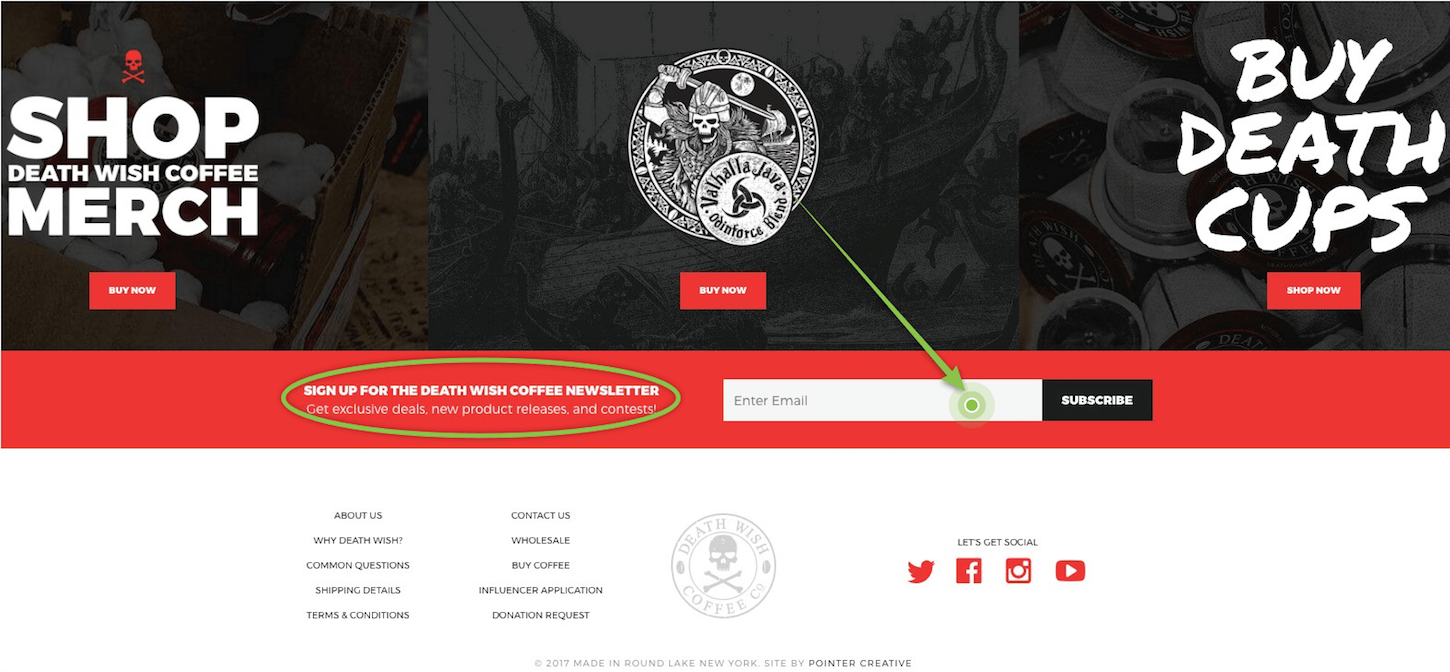
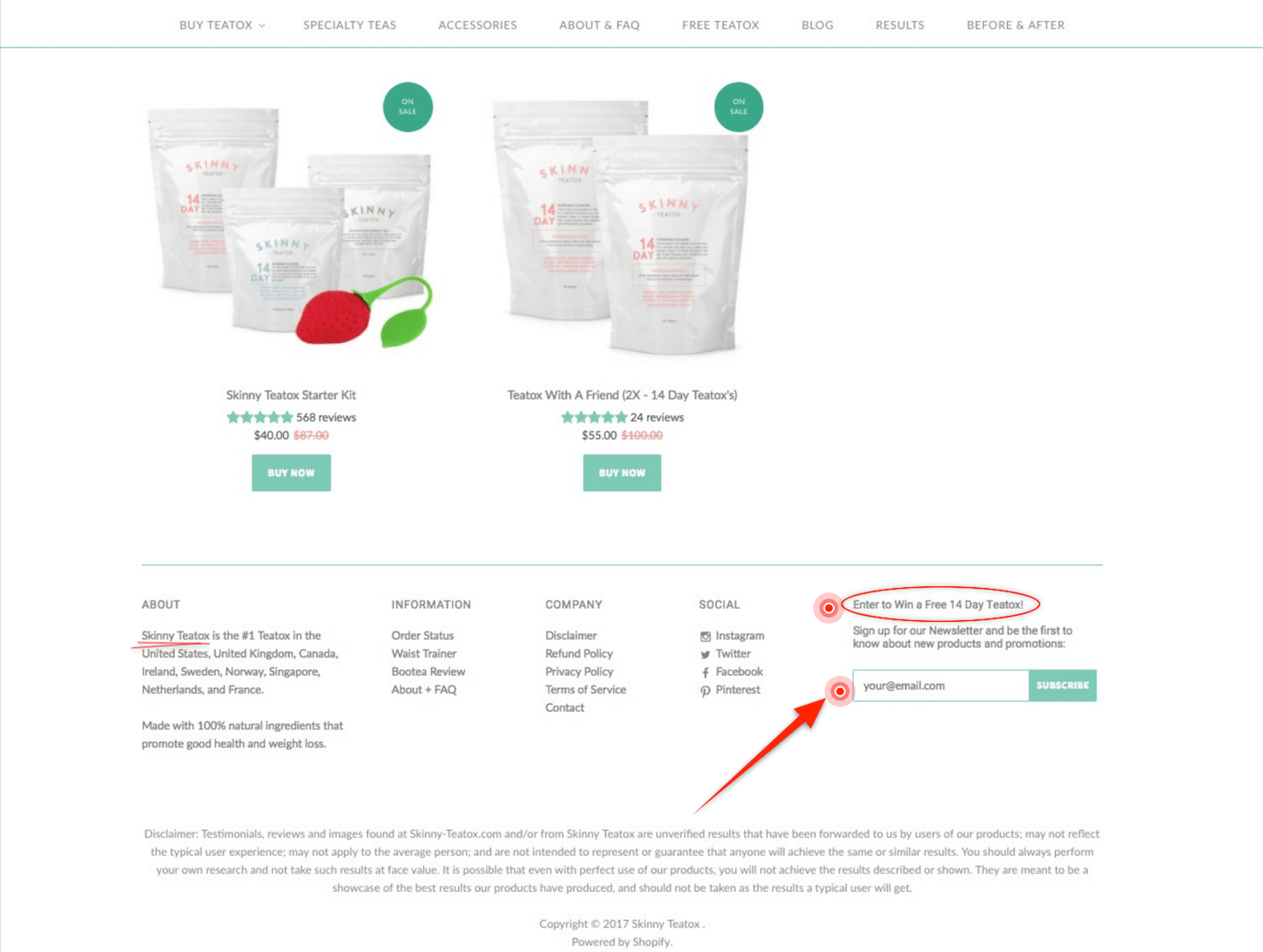


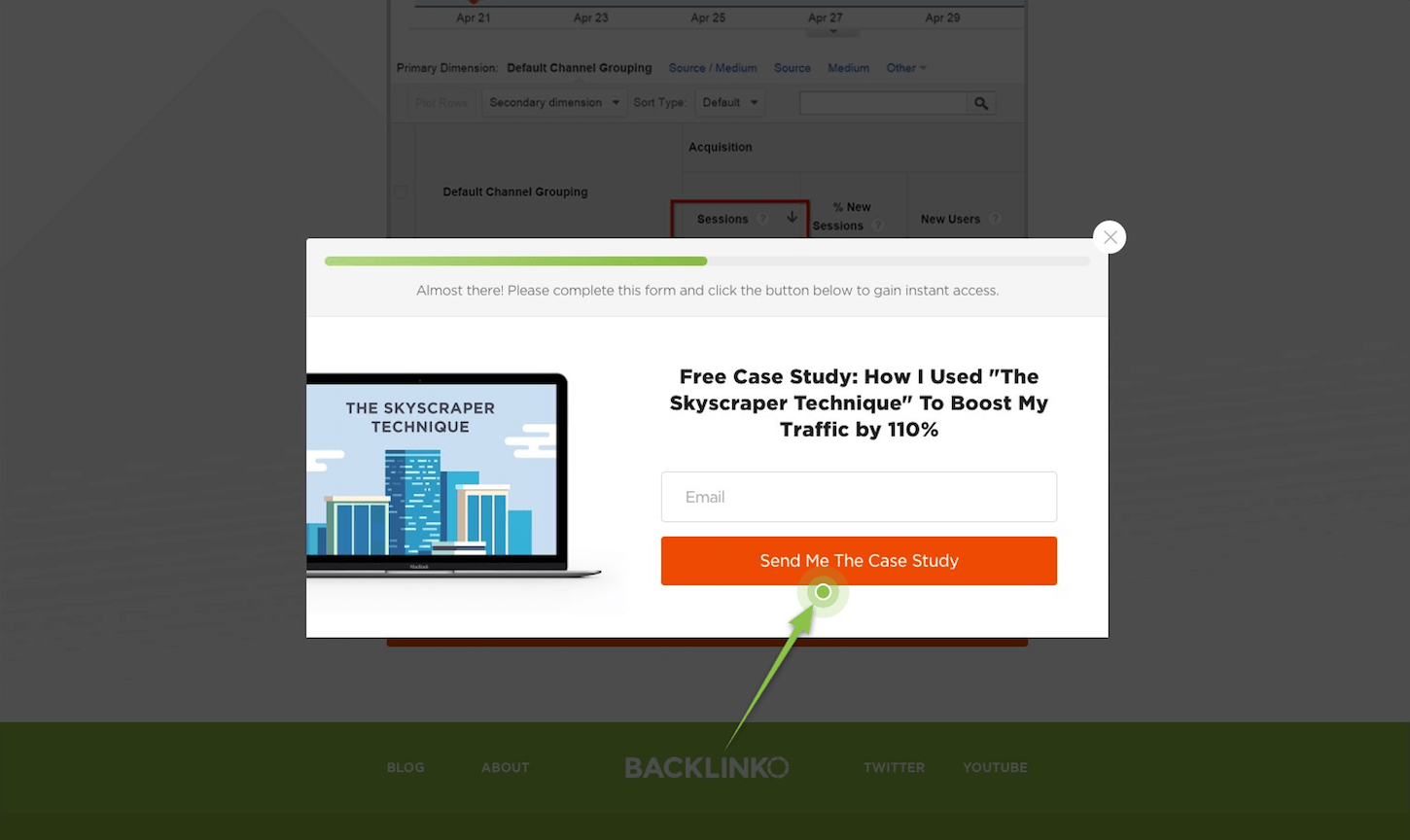
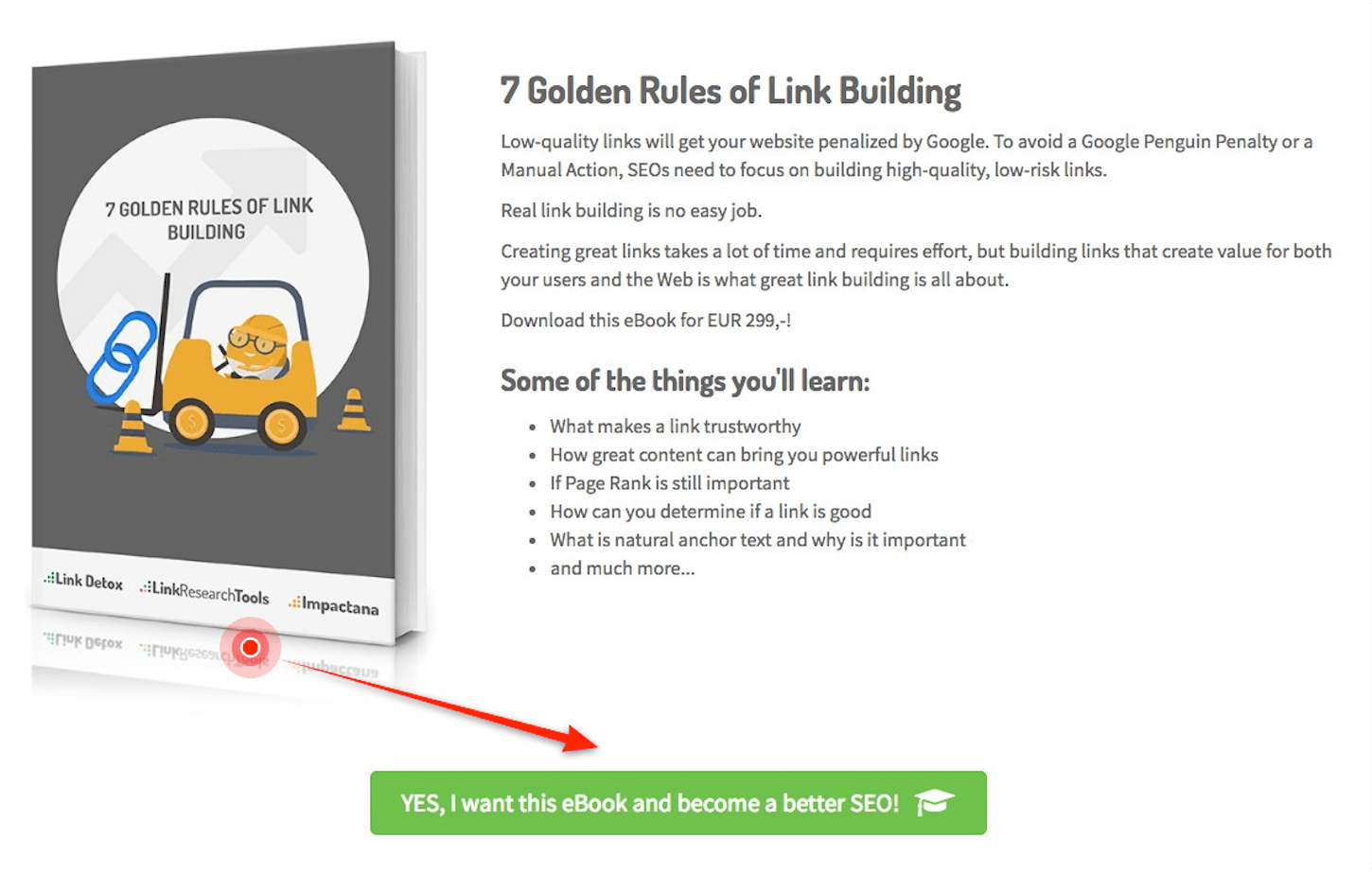
It’s important to mention that in this stage of the marketing funnel, the process and goals for most types of websites and businesses are nearly the same. They all focus on getting an email from their visitors.
For most of your visitors that are browsing through the website by reading your blog, opening product pages, or just getting informing about what you have to offer, it’s usually safe to assume they’re there for a reason.
These visitors will also likely be interested in relevant content, even if it’s gated behind the opt in form. Of course, the prerequisite is that the gated content is well-researched and matched with your target audience’s interests.
Otherwise, the ‘interest trigger’ will never happen and the lead magnet will convert poorly. Alternatively, those visitors that do convert will actually exit the funnel later when they realize that your content doesn’t meet their expectations.
On the other hand, if the conversion happens, what follows after the email is submitted should feel like “magic.” Behind every great content marketing funnel lays a fully elaborated and automated process, aka the email sequence.
For visitors that didn’t opt in, it is always recommended to retargetthem through PPC channels a few more times with similar or relevant content to try and attract an interest. However, this part can be highly dependent on the niche and business model and usually differs from case to case.
You might also like: 10 Apps to Boost Your Content Marketing Efforts.
Step #3 — Bottom Of The Funnel (BoFU)
The final step we have to take in our journey is to figure out what content your leads need to make aninformed purchase decision.
The ultimate goal of a marketing funnel is to convert leads into paying customers and move your prospects from evaluation to conversion. It is at this stage that you need to help them decide between yourself and your competitors by demonstrating how your product or service can deal with their circumstances (like the example below). This will help move them to the point where they’ll be able to make an informed purchase decision.
and move your prospects from evaluation to conversion. It is at this stage that you need to help them decide between yourself and your competitors by demonstrating how your product or service can deal with their circumstances (like the example below). This will help move them to the point where they’ll be able to make an informed purchase decision.
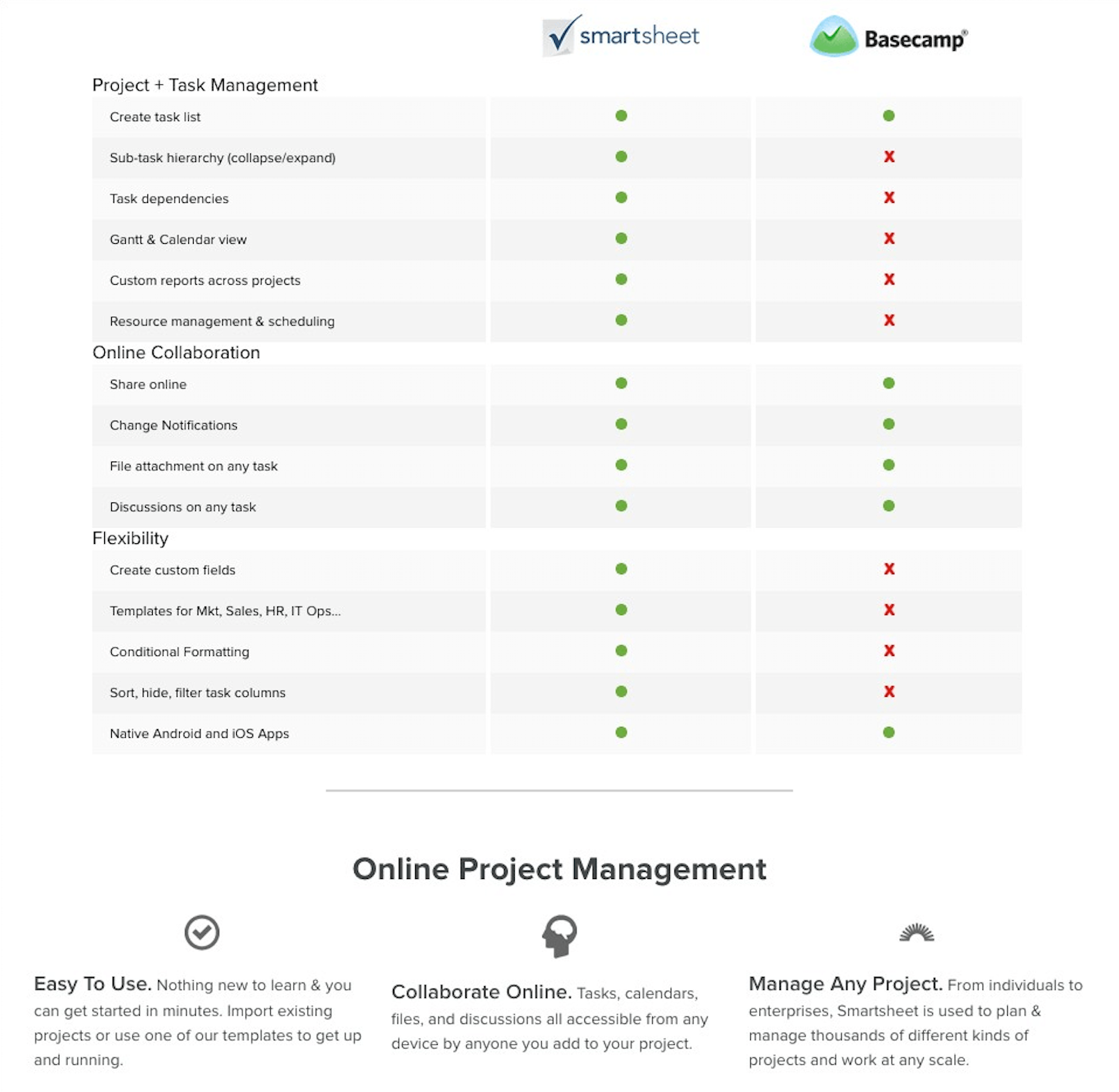
In theory, your visitors have read your blog posts and seen your case studies, and now it’s time to provide them with content that’s highly specific.
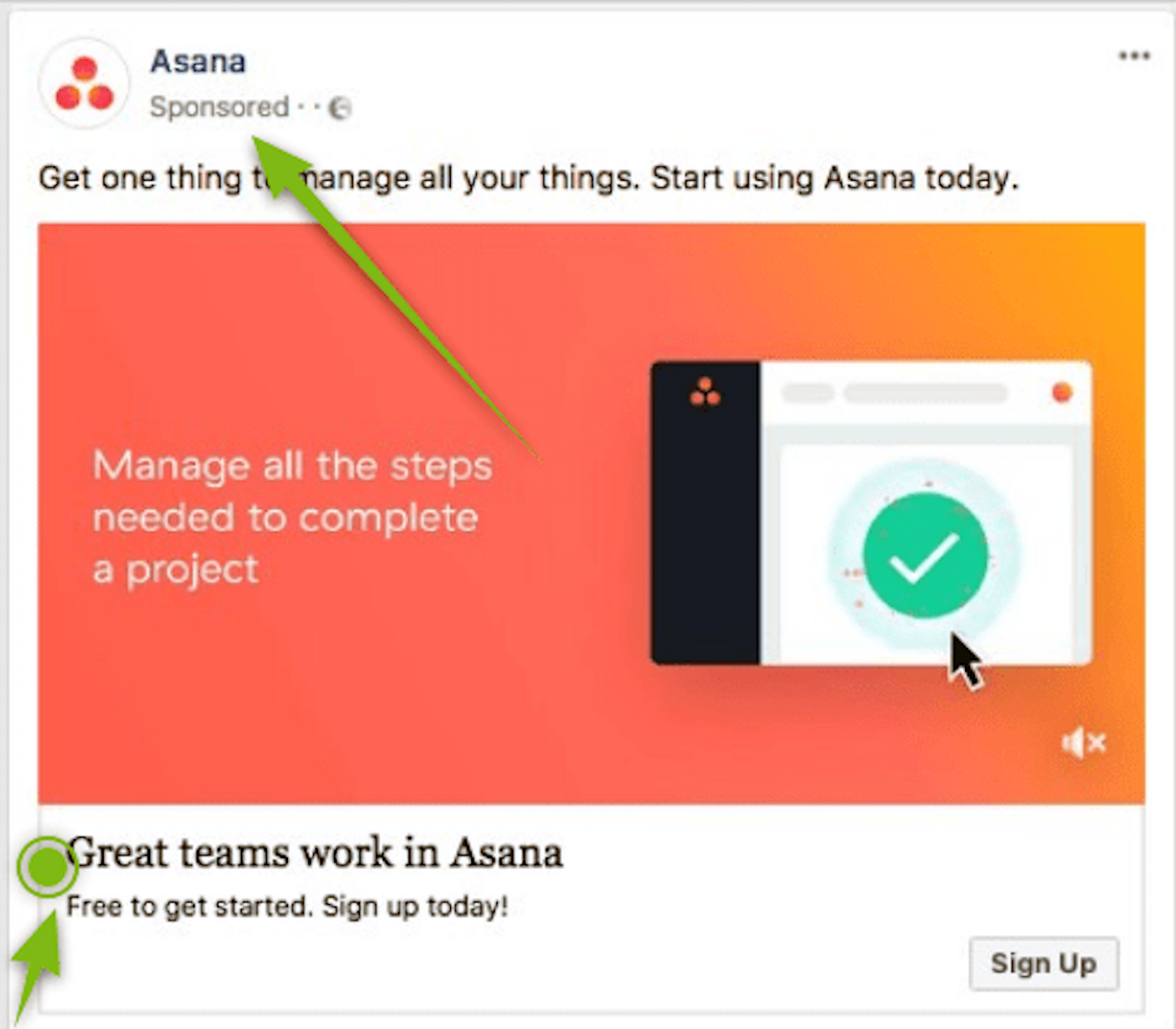
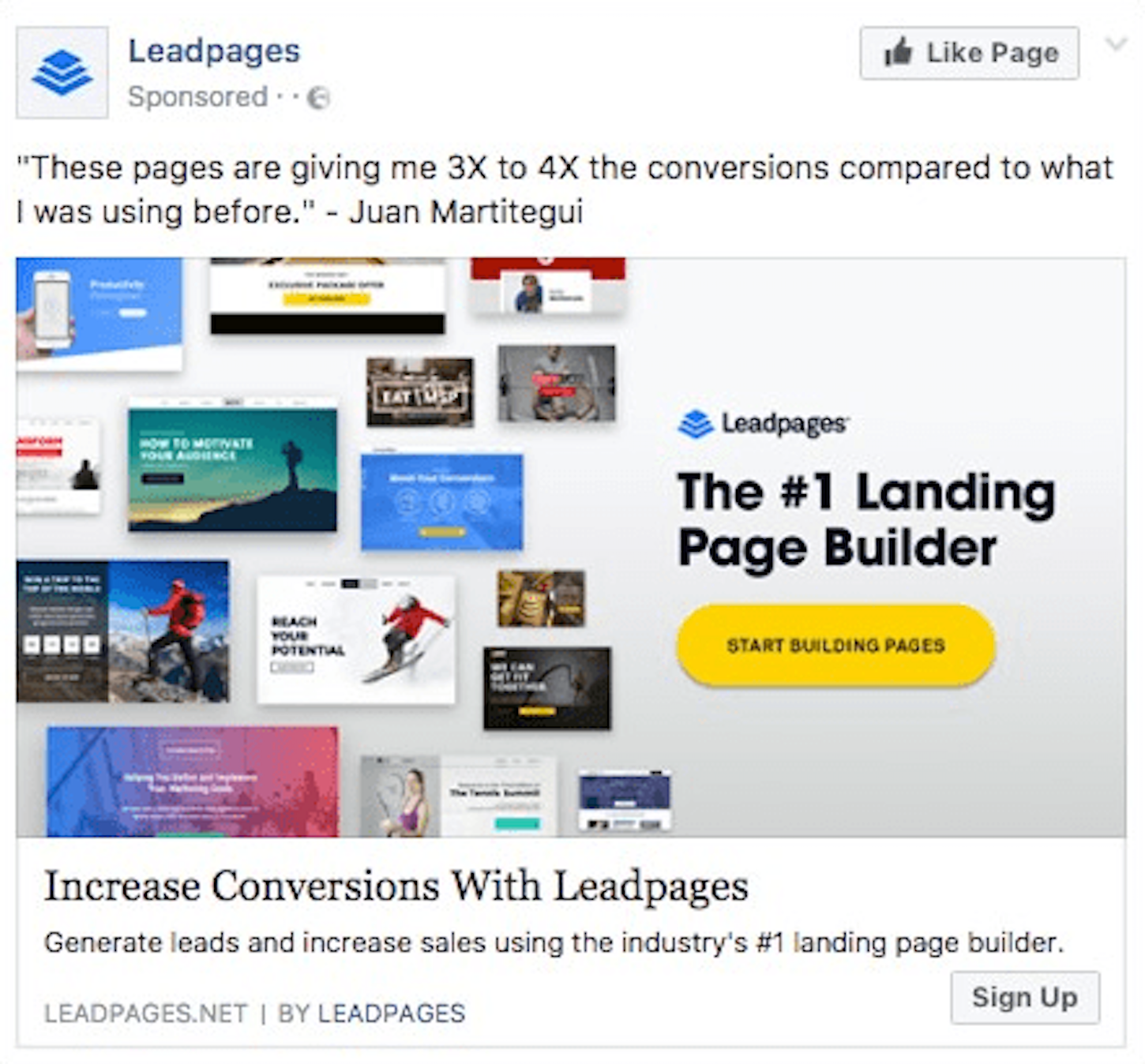
BoFU content type:
- Demo/trial (yes, your product or service is content too)
- Customer stories
- Testimonials
- Comparison/spec sheet
- Webinars/events
- Mini classes
Goals:
- Nurturing leads/customers
- Grow retargeting lists
- Maximize customer value
- Increase retention
- Increase buyer frequency
Metrics:
- Number of sales to qualified leads
- Offer conversion rate
- Promo email opens and click through rate
- Retargeting list growth
- Average customer value
- Retention rate
- Buyer recency/frequency
For some business models, this is the stage where offering a tripwire is also a good option.
Tripwire is always a low-cost, relatively painless and, most importantly, an IRRESISTIBLE offer for your target audience. By buying it, customers gives you their trust and pass the psychological barrier of becoming your paid customer.
Even if it’s only a $1 offer, it is proven that simply by paying for it and going through the transaction process, people are a lot more likely to buy from you in the future, including much more expensive goods or services.
In other words, the trust has been built.
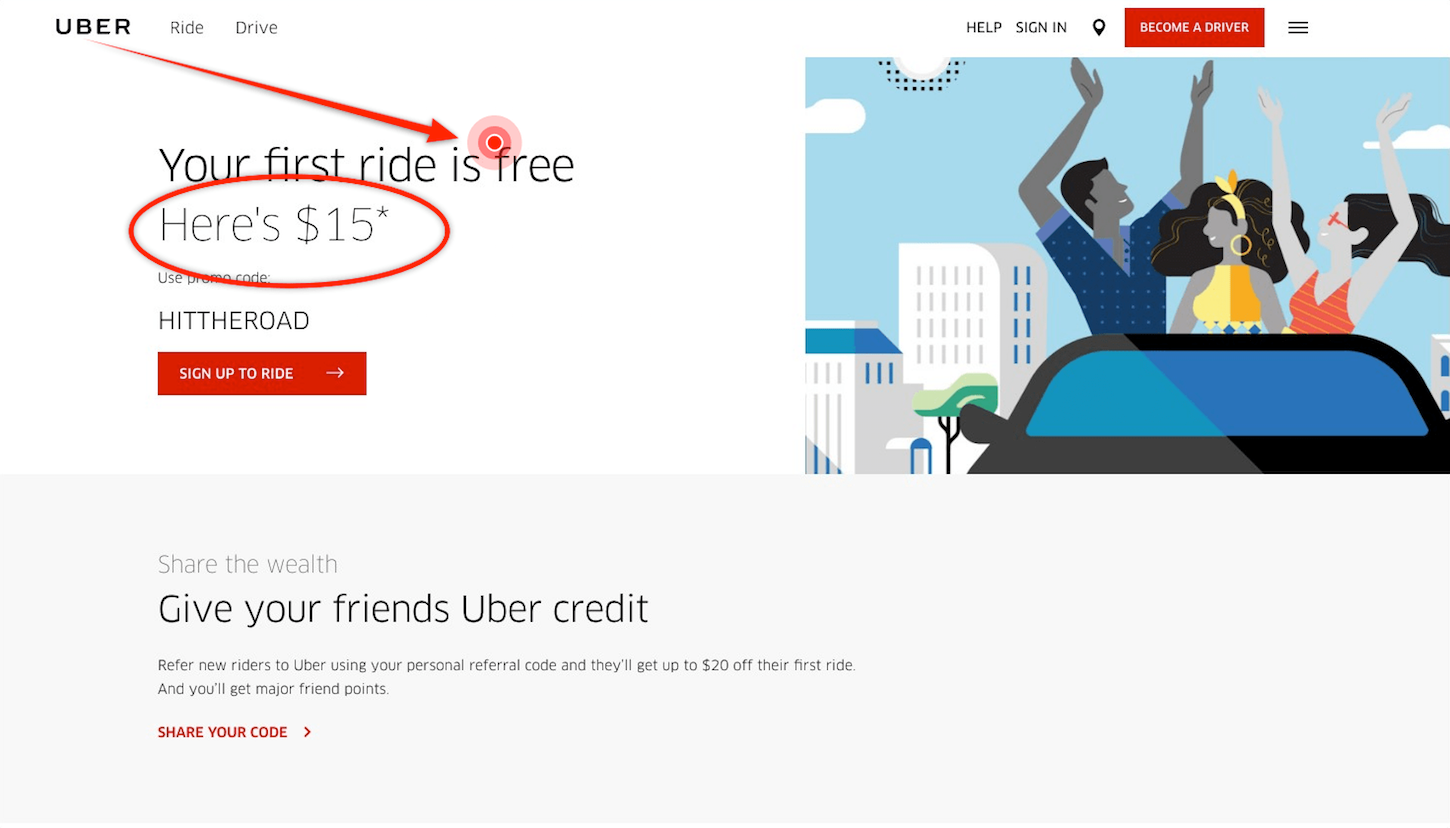
In the ecommerce world, there are some specifics compared to most other website types.
For example, content marketing funnels for service-oriented businesses, personal websites, SaaS businesses, or software vendors need to be different from Amazon’s or Daily Steal’s.
Why?
Ecommerce brands usually focus on selling to as many buyers as possible. On the other hand, in the non-ecommerce world, goals could be completely different. For example, many service-oriented businesses, especially B2B ones like marketing agencies, usually need only a few bigger clients to fill their capacities.
As expected, content for each stage of the funnel will probably differ a lot between these two business models.
In the ecommerce world, BoFU is the stage where you might want to offer a first order discount, free delivery, “pay for shipping only” offer, free sample product, or similar catchy offers, like in the examples below.
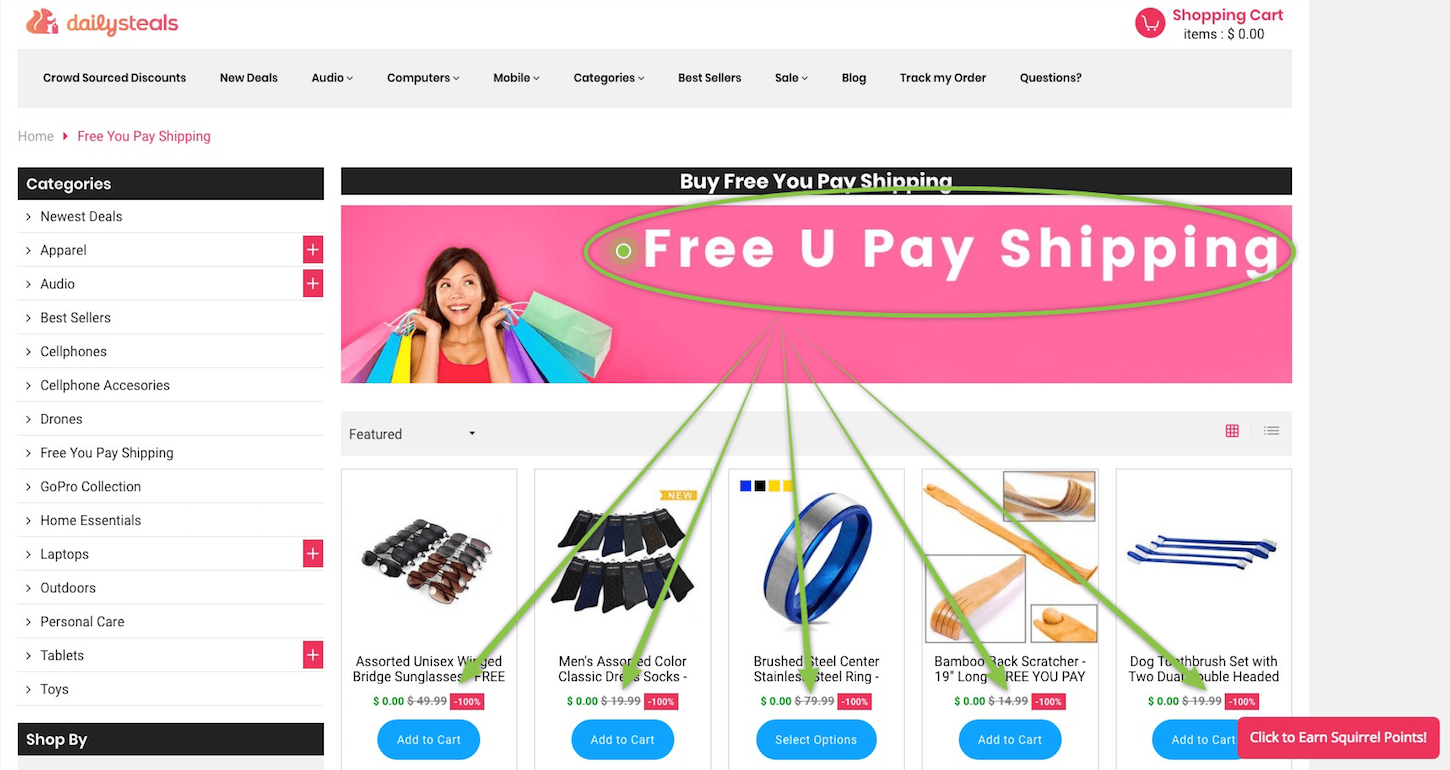
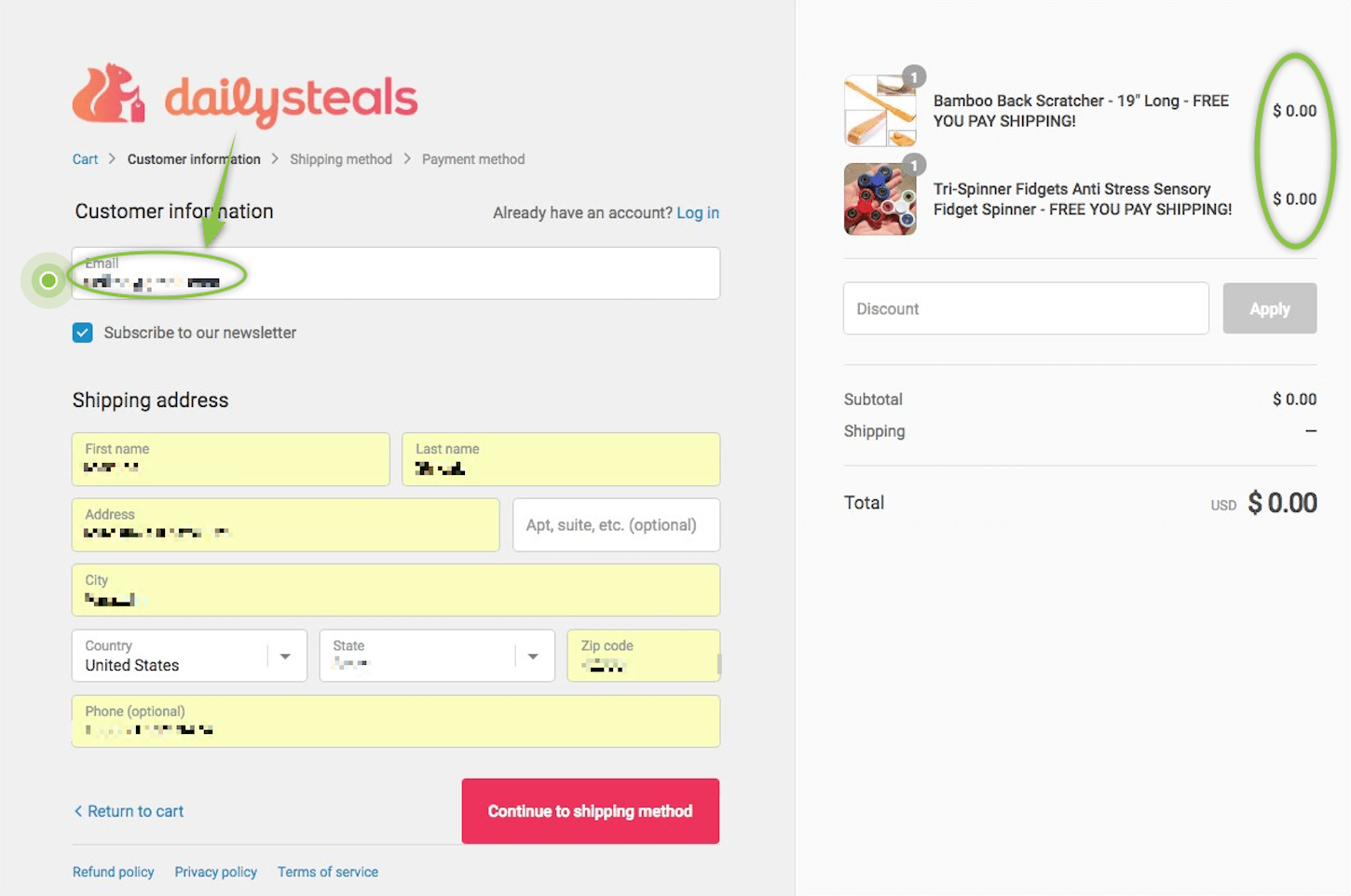
Daily Steals, for example, gives small gadgets for free to their customers (you only pay for shipping), but don’t forget — they got your email instead. They will surely use it for further promotion.
After “buying,” you’re in their content and sales funnel and, statistically and scientifically proven to be more likely to buy from them again :)

There are other creative ideas for increasing conversion rates in this stage. As an example, if you don’t complete your purchase, Daily Steals will remind you about products in your cart through Google Chrome notification.

And yes, this is also content.
There are a variety of creative approaches to designing and creating a marketing funnel for an ecommerce business model. Some of them are illustrated below:

What next?
After the first purchase by a new client has been finalized, don’t even think about stopping with your work on content.
There are still opportunities to upsell your offer or to sell more items (if you’re running an ecommerce business). In case you’re selling a month-to-month service, this is the part where you could try to nudge the customer to pre-pay for the whole year with a discounted price. For service-oriented business models, this is the part where you make your high paying offer.
All this can be done by providing smart-matched content to those that are already in the bottom of the funnel stage. Showing this type of content to those that are not in the bottom of the funnel, or in other words, to people who are not familiar with your brand and values, will mostly be a waste of your time and money.
These visitors are simply not ready to buy from you yet and they feel suspicious.
Remember our analogy with marriage from the beginning of the post?
Well, giving your ToFU visitors BoFU content will make them feel like you asked them to marry you on your first date.
You don’t want to be that person.
Or that brand.
You might also like: 7 Content Ideas That Will Drive Revenue for Your Agency.
Wrapping it up
Those that managed to stick with the post this far should be completely aware of the importance of smart content matching for every marketing funnel stage.
This is also the point where you’ll realize why anyone doing business online, including ecommerce brands, agencies, or freelancers, should find out in which stage of the funnel their visitors are and what content they are consuming.
It’s not just about spending your money on advertising without a clear goal (by showing any content type to everyone) and never meeting your ROI point, but also about how irritating you could become to your audience by practically ‘spamming’ them with wrong content types.
A quick example. Imagine a case where a visitor already bought a tripwire offer. A week later, you send them the content piece promoting exactly the same offer, the one they already purchased. I run into something like this from time to time and it’s really annoying.
The concept of leading the audience all the way from ToFU to BoFU is not simple. It may sound simple in theory, but it's definitely not!
It requires a lot of analyzing, planning, and researching to consider, design and, most importantly, implement your overall lead nurturing strategy.
Last but not least, creating a well-designed marketing funnel with smart-matched content can mean a financial investment, too. Of course, the complexity of the funnel itself depends on the complexity of the business model, type, and scale.
Many businesses still can’t afford to cover all the stages properly. But ask yourself — can you really afford not to at least start implementing and applying the marketing funnel concept that is basically an automated and often self-sustaining lead generating machine?
In today’s ecommerce world with non-stop, increasing competition, there are more and more players in this field who follow the marketing trends. You don’t want to be the last in line, do you?
Will you be implementing a smart marketing funnel? Let us know in the comments below!









